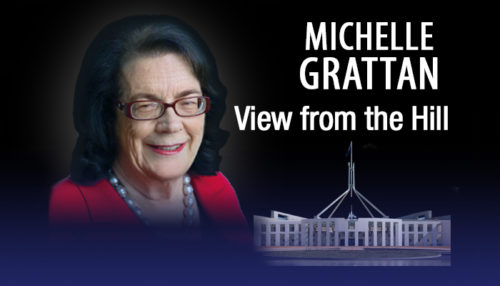“As a Labor supporter for more than 50 years, I think the policies being pursued by the ACT government in health and housing are contrary to core Labor values,” writes former chief minister JON STANHOPE.
SIX years ago, Labor and the Greens resolved, for mainly ideological reasons, to reduce overnight the amount of land to be released for detached housing, from 70 per cent to 30 per cent.

In other words by more than half, with no lead time, despite the housing preference of 91 per cent of Canberrans being for a detached house.
It was obvious, particularly since the ACT government has a monopoly on the supply of land, that a cut in supply of that order would, in a city with strong and consistent growth in population, have a huge impact on the value of detached housing.
Labor and the Greens must also have known it would lead to the exclusion of thousands of families from the detached housing market.
There are two main issues, central to the role of any government, where policies recently pursued in the ACT by the ALP and the Greens cause me deep and growing disquiet.
These are, firstly, the hollowing out of the public health system by large, in real terms, funding cuts.
And, secondly, the range of parallel decisions taken by the government to:
- reduce the stock of public housing;
- emasculate the community housing sector;
- abandon any serious commitment to affordable housing
- and to knowingly price the working class and low and moderate-income households out of the detached housing market.
As a Labor supporter for more than 50 years, I think the policies being pursued by the ACT government in these areas are contrary to core Labor values.
All the relevant data, ie the facts, bear me out. The following is a brief summary of some current housing data.
Housing affordability
The impact of recent housing and land supply policies on housing affordability can be clearly illustrated by charting, over the course of the last decade, the median and sub-median multiples. These compare, respectively, a ratio of the dwelling price to the median household gross income (before tax) and the median dwelling price to the 40th percentile of gross income.
A median multiple of more than 5 is considered severely unaffordable. The median multiple is also an indication of the barriers to entry to the housing market. For example, if a market has a median multiple of 5, a household will require a deposit equal to one year’s gross median income.
In Canberra, the median multiple decreased from more than 5 in 2007-08 to 4.5 in 2011-12, following the introduction of supply measures under the Affordable Housing Action Plan, including a boost in land supply, supply targets for affordable housing and lower-cost housing options such as Land Rent and Own Place.
However, it has increased significantly from 2013-14 since when the supply of land has been deliberately constrained and the central features of the Affordable Housing Action Plan abandoned.
Accordingly, the median multiple had increased by 2019-20 to 6.6 while the sub-median multiple grew to almost 8. What this means, in real life, is if you are a family with gross household income of, say, $100,000, then to buy a median-priced house in Canberra requires savings of $160,000 or an amount equivalent to 1.6 times your annual gross income, as a deposit.
Community housing
I recommend that anyone interested in understanding the impact on the community housing sector of decisions taken by the ACT government in recent years read the “Community Housing Canberra (CHC) Annual Report 2019/20”.
The report includes on Page 2 a chart that shows in the six years from 2008 to 2014 that CHC’s portfolio of tenancies grew by 420. By comparison in the six years between 2014 and 2020, CHC acquired only an additional 30 tenancies. During this latter period, the government ceased to honour an MOU guaranteeing CHC land for up to 120 units of housing a year and in 2017, rather than simply rolling over a revolving finance facility of $50 million granted in 2008, called it in and directed CHC to make an annual principal repayment to the government of $3.5 million.
The impact on CHC is best illustrated by the fact, as reported at Page 32 of its annual report, that in 2019 it increased its stock of housing by a derisory two dwellings and in 2020 by a mere eight dwellings.
Public housing
There is clearly much to be alarmed about in relation to the management of public housing in the ACT. For present purposes I will do no more than refer to the fact that over the decade from 2010 to 2020 the number of units of public housing in the ACT fell by 78, even though the population grew by 63,395.
I am at a loss to understand why or how a progressive government has allowed this to happen and leave it to you to draw your own conclusions.
Jon Stanhope was chief minister from 2001 to 2011 and represented Ginninderra for the Labor Party from 1998.
Who can be trusted?
In a world of spin and confusion, there’s never been a more important time to support independent journalism in Canberra.
If you trust our work online and want to enforce the power of independent voices, I invite you to make a small contribution.
Every dollar of support is invested back into our journalism to help keep citynews.com.au strong and free.
Thank you,
Ian Meikle, editor




Leave a Reply